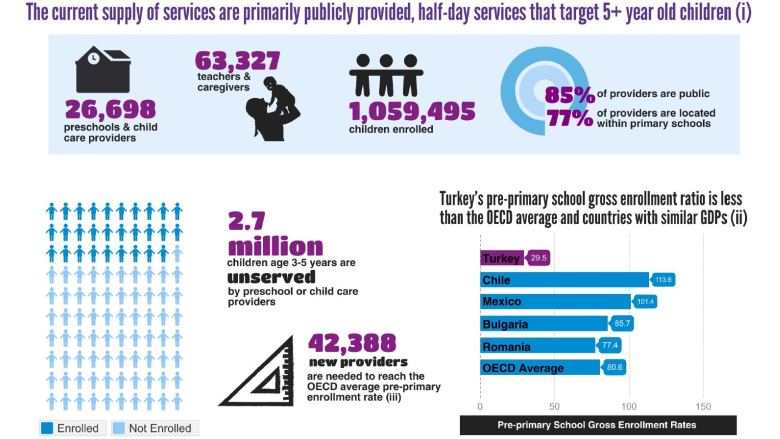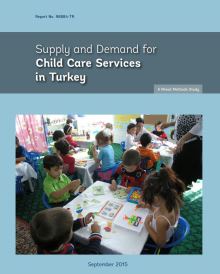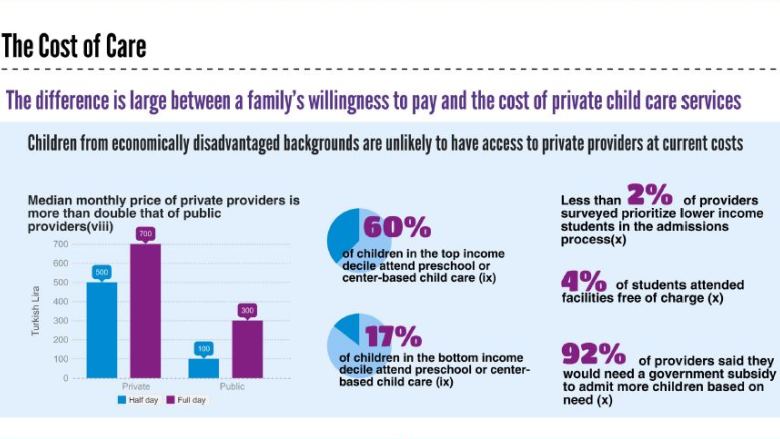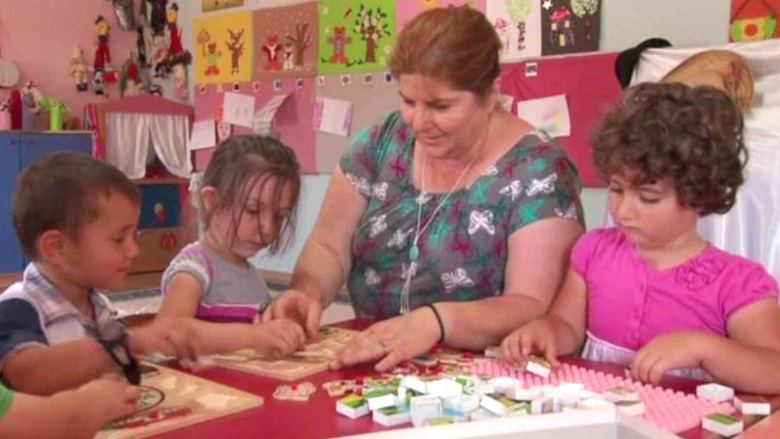This report takes stock of the current situation of the supply and demand for child care services in Turkey with the objective of identifying key constraints and opportunities to expand quality and affordable childcare access to benefit both children’s early development, and mothers’ access to economic opportunities and labor participation.
The study focuses on the quality, affordability and accessibility of a sample of 603 public and private childcare service providers in a selection of provinces. These locations represent different province types in the country in terms of female labor force participation and existing childcare available capacity. In the same provinces the demand for child care services was assessed with working and non-working mothers of children ages 0-6.
The analysis in this report shows that current utilization of child care services cannot be construed as lack of demand for services, but rather as a lack of demand for services at the existing cost and price-quality structures. Services that respond to the needs of working mothers are less prevalent and more costly than the willingness and ability to pay of the average household.
For most women - particularly for those with low levels of education - the difference between earnings and the cost of care is too low to justify joining the labor force and their willingness to pay for care does not cover the current median prices for child care and kindergarten services.
Analysis in this report shows evidence of a mismatch between supply and demand of care services in terms of expectations on availability, prices and quality between, mainly caused by a lack of adequate public provision or financial support to cover the latent demand facing financing constraints, and by high regulations and standards imposed particularly on the private services.
Comprehensive policies that target both the supply and availability of child care while making it more affordable on the demand side particularly for women who have potential to join the labor market, are expected and likely to have a high employment impact as well as benefit the early development of Turkish children.



